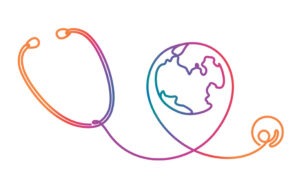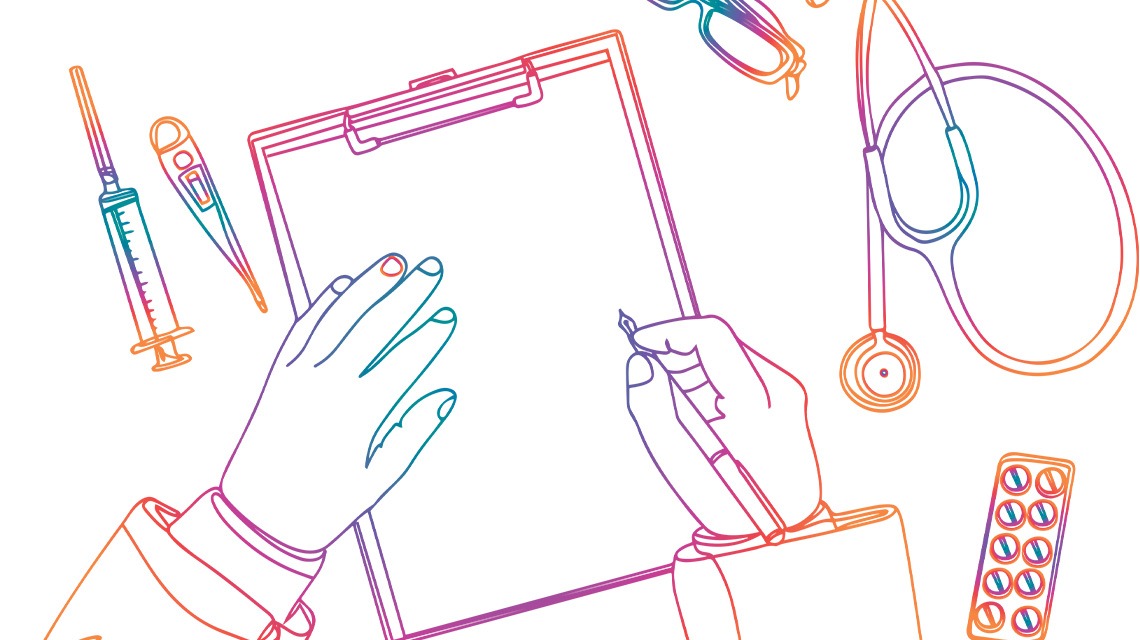Insights on compliance, technology and creativity for captivating health-care professionals
The daily planner of a medical professional is off the charts. How can you grab the attention of health-care workers and get them to realize they absolutely must make time to attend your meticulously plotted medical conference?
Smart Meetings got the inside scoop from Ariana Reed, director of global strategic partnerships with American Express Global Business Travel, and Andrew Hoag, category manager of commercial meetings and events at Biogen, on the latest hot buttons for planners when designing their next health-care conference.
Compliance and Nixing the Cocktails

If you plan medical meetings, you know how important compliance is—the process of abiding by all legal, professional and ethical standards to prevent fraud, harm or abuse.
“Compliance is a constant part of our planning process,” Reed says. “It comes first…and then everything flows from there.”
Read More: Event Case Study: Healthcare Facilities Symposium and Expo

director of global strategic
partnerships at AMEX Global
Business Travel
Compliance within medical meetings may encompass things like meal caps, food and beverage and even venue location. Alcohol may be off the table for compliance as well as expense reasons. Increasingly, though, medical planners want their guests to be immersed in the content, not the cocktail.
“The [standard operating procedure] has sort of shifted back toward: Why is the meeting being hosted in the first place? It’s not entertainment. It’s content delivery. It’s training, it’s new information,” as Hoag puts it. “Time is precious…let’s get down to business rather than have another glass of wine.”
Planners should also make sure to check compliance rules and regulations when hosting in other countries, as they may be different, he emphasizes.
Accessible Technology

category manager at Biogen, photo by @chuckfazio
The expansion of technology, specifically at health-care conferences, can be a game changer. Gone are the days of printing out reams for booklets for attendees who may not be attending.
“It is a sustainability issue,” Hoag says. “It is also a glaring opportunity to implement new technologies. There are some great mobile applications available that can be done in a compliant way where we’re respecting people’s privacy, especially in a global setting.”
Technology allows for planners to see how engaged the attendees are, and which parts of the presentation they found particularly interesting.
Read More: How Technology Can Help Us Build a Greener Events Industry
“We’re seeing a lot of tools that provide engagement not only after the event with feedback but with translations as well,” Reed says, “[With] an app like Interprefy, you’re able to get the content not only in your native language but potentially, with AI, your native tone and your dialect of language as well.”
AI technology is playing an ever bigger role in the experience at health-care events. With the help of AI apps and technology, planners can create a more personalized experience for their attendees.
“It used to be that the barrier to entry to [technology] was pretty high, and the cost to implement it was substantial. That has come down a lot with overall adoption of these tools,” Hoag says.
But also be mindful when implementing new technology. “Make sure you’re defining what your problem is, and then go find the right tool to solve that problem. If you’re gonna do it, do it right,” Hoag says.
Sustainability and Wellness
 The meetings industry as a whole has leaned into sustainability and wellness as major need-to-haves for both attendees and planners in recent years. For health-care meetings, Reed points to location as the starting point in this journey. For example: “In the pre-planning phase, think about locations that are compliant for your attendees but also locations that might be closer, based on where the attendees are located.”
The meetings industry as a whole has leaned into sustainability and wellness as major need-to-haves for both attendees and planners in recent years. For health-care meetings, Reed points to location as the starting point in this journey. For example: “In the pre-planning phase, think about locations that are compliant for your attendees but also locations that might be closer, based on where the attendees are located.”
Reed also favors using walkable locations rather than those that require transportation to get to off-site events. She says research shows that allowing attendees the chance to get some fresh air and stretch their legs may help them with their general focus and concentration during their next session.
Reed is also onboard with the meetings trend of not overscheduling sessions and planning break time or brain breaks within the larger sessions. Creating space for mental breaks allows attendees to check emails, make a phone call or just step away from the content presented to let them to come back refreshed and ready to learn more.
Hoag notes that publicly traded companies hosting medical meetings, in particular, are often required to report on their sustainability measures.
“It’s one thing to say that we’re doing good things, but it’s another to have a process in place to be able to calculate and track and have a baseline for what it is you’re doing,” Hoag says, underscoring that it is important that these metrics be gathered with enough rigor so that they can be confidently shared within the organization, with senior leadership—”and ultimately, with the street.”
Trade Show Trends
In medical tradeshows, technology such as heat mapping to show traffic patterns and linger times and facial technology to capture expressions when attendees are engaging with content are increasingly common.
Yet, as Hoag points out, “There are only so many exciting ways to display scientific information.” She continues: “But it’s important, it’s required and it needs to be there. A certain percentage of attendees will sit and engage with that content.”
While medical trade shows are increasing in frequency, Reed cautions that time constraints on the part of both potential attendees and health-care providers may necessitate a strategy of virtual meetings and sessions leading up to the in-person event.
“In order to capture an audience and to be able to manage through availability, you have to be creative in the format of meetings” Reed says.
Let’s Get Creative

Creativity is always one of the most vital assets in any planner’s toolbox—and never more so than with medical meetings.
“It comes down to the planner’s creativity in providing the technology, the active polling, the notetaking, and the creativity in food and beverage to stay within those meal caps,” Reed says. “How can they be creative in the logistics to make sure they have a very compliant meeting, but they also have meetings that are a great experience?”
Hoag encourages looking at unique venues as places to attract attendees with creative planning. “It is very difficult to host an effective meeting with the parameters and limitations that we have,” she laments, “and if you’re doing that well right now, then by default you have to be a very creative person, otherwise it just [won’t work].”
Better Outcomes
Smart Meetings asked both Reed and Hoag for their top tip for creating better outcomes within medical meetings.
“Time,” Reed replies. “Leave time, so you can carefully curate an experience for your audience. It’s hard, but it pays off for the experience and the attendee.”
“Ask your audience what it is they want from you,” Hoag says. “Make sure you’re not making incorrect assumptions about what they want their experience to be or what they’re hoping to get from you. You might be surprised at what their priorities are.”
This article appears in the July/August 2024 issue. You can subscribe to the magazine here.




